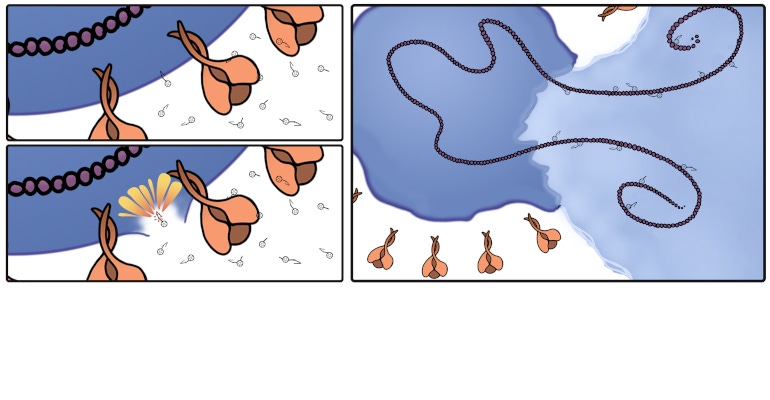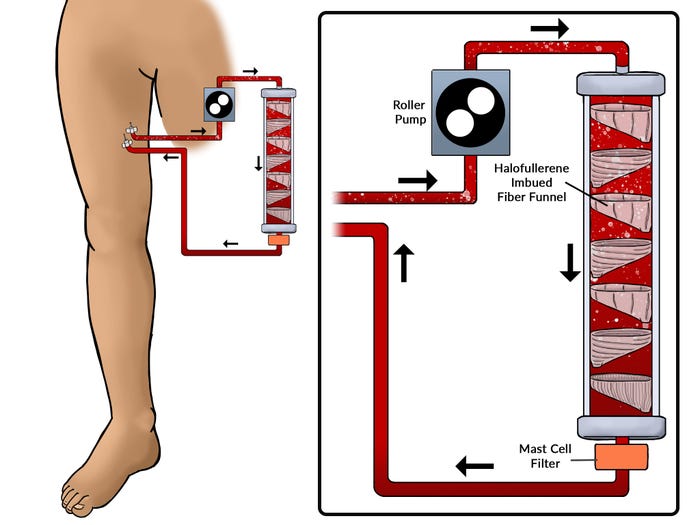August 18, 2020

Researchers from Kepley BioSystems have invented the means to “permanently infuse” reusable substrates such as personal protective equipment (PPE) and medical garments with antimicrobial functional fullerenes that could withstand cleaning. These fullerenes are developed to bind to and inactivate pathogens such as viruses, fungi, and bacteria, potentially SARS-CoV-2, the company reported in a news release.
Lead inventor Terry Brady of Kepley BioSystems told MD+DI that “the microbiocidal properties of a halogenated fullerene is absolute when making contact with a pathogenic microbe. By way of explanation, a fullerene (C60) is small and fits between the spikes of a coronavirus and the halogen barb bonded to the outer C60 cage (caustic) will easily pinprick any virus or bacteria and fungi.” The fullerenes would remain functional in the material and would not be released into the atmosphere or into the human bloodstream, he explained.
Added Anthony Dellinger, president of Kepley BioSystems, in the release: "Our group has a unique blend of medical and fullerene development depth, and this invention crosses the regulatory Rubicon by maximizing the therapeutic potential of fullerenes without systemic, clearance, half-life, or residual toxicity risks."
In a white paper shared with MD+DI, the company argued that current PPE solutions have provided hydrophobic microbial barriers, but because they lack antimicrobial properties and typically repel pathogens, they “impart little direct benefit for the control of pathogens (elimination or transmissibility).”
As an alternative, the authors argue that “effective, safe, timely, and economical innovations should be bioactive with unfailing pathogenicity towards all infectious microorganisms regardless of type, species, or strain.”
Kepley BioSystems’s solution is the halogenated fullerene, which is a fullerene bonded to a halogen (chlorine, bromine, iodine, and fluorine) from the class of caustic non-metallic elements employed as hospital-grade antiseptics and disinfectants for years. These halogens equip fullerenes with barbed caustic protrusions, and because the fullerenes are electronically charged atomic-scale carbon spheres, the halogenated fullerenes attract and trap pathogens, according to the paper. “In this circumstance, fullerenes act as a magnet that behaves as an ‘electron sponge,’ with atomic affinity to the pathogens via electrostatic interactions,” the authors write.

Above: "The Kepley Bioactive PPE material renders pathogenic particles inactive through a combination of orchestrated physics phenomena. When a virus contacts the applied hydrophilic coatings, it is naturally pulled into the material and against the opposing pressure of the embedded halofullerenes. The tension created will draw the virus into the caustic halogenated barbs disrupting the protein bonds of the virus, rendering it inactive and ultimately harmless." Image and caption courtesy of Kepley BioSystems.
“We propose that strategic modification of a material’s surface via highly hydrophilic coatings and encapsulated caustic halofullerenes is the hallmark strategy for preventing SARS-CoV-2 transmissions and subsequent infections. Recent reports have shown the presence of positive static charges on a coated surface altered the induced dipole of the surface protein of SARS-CoV-2 causing permanent damage, disintegration, and inactivation,” the authors wrote.
In addition to suggesting halogenated fullerene coatings for PPE, the company is also exploring use of the coating in filtration canisters or cartridges for extracorporeal blood purification and treatment, company representatives shared with MD+DI.

Above: "A hemofiltration process includes a halofullerene filter matrix that attracts and eliminates free-floating and cellular bound pathogens. Halofullerenes are permanently affixed to a highly hydrophilic filter article and result in no systemic release of the nanoparticle into patient circulation." Image and caption courtesy of Kepley BioSystems.
Kepley BioSystems has filed two patents: “Synthetic, multifaceted halogenated, functionalized fullerenes engineered for microbiocidal effects employing controlled contact for safe therapeutic and environmental utility” and "Self-Contained, Mobile Breathing Apparatus or Appliance that Supplies Pathogen and Endotoxin Free, Rhythmically Breathable Air to the Wearer or Treated Space through Active, Continuous Bio-Deactivation of Bacteria, Fungi, Viral and Allergenic/antigenic Matter Safely When Using Benign, Household, Rechargeable Filtration Media.”
The company reports that it is seeking investors and biomedical partners to help advance and employ the technology.
About the Author(s)
You May Also Like



.png?width=300&auto=webp&quality=80&disable=upscale)
